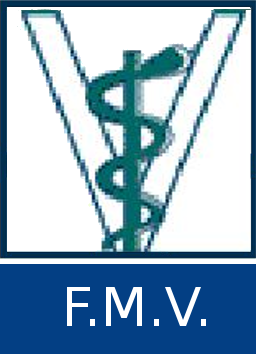CRISPR Cas 9 comme outil de la thérapie somatique
Magnier, Esther 
Promoteur(s) :
Georges, Michel 
Date de soutenance : 21-jui-2021 • URL permanente : http://hdl.handle.net/2268.2/12135
Détails
| Titre : | CRISPR Cas 9 comme outil de la thérapie somatique |
| Titre traduit : | [en] CRISPR Cas 9 as a tool for somatic therapy |
| Auteur : | Magnier, Esther 
|
| Date de soutenance : | 21-jui-2021 |
| Promoteur(s) : | Georges, Michel 
|
| Membre(s) du jury : | Charlier, Carole 
Druet, Tom 
Farnir, Frederic 
|
| Langue : | Français |
| Nombre de pages : | 36 pages (avec présentations, illustrations, bibliographie et annexes) |
| Mots-clés : | [fr] CRISPR-Cas 9 [fr] Ingénierie génétique [fr] ADN [fr] Chiens [fr] Souris [fr] technologie génétique [fr] édition génomique [fr] correction mutation [fr] CRISPR [fr] Cas 9 [fr] génétique [fr] Dystrophie musculaire de duchenne [fr] genetic editing [fr] base editing [fr] dogs [fr] mouses [fr] genetic technology [fr] DMD [fr] dystrophy [fr] mutation |
| Discipline(s) : | Sciences du vivant > Médecine vétérinaire & santé animale |
| Public cible : | Chercheurs Professionnels du domaine Etudiants Grand public |
| Institution(s) : | Université de Liège, Liège, Belgique |
| Diplôme : | Master en médecine vétérinaire |
| Faculté : | Mémoires de la Faculté de Médecine Vétérinaire |
Résumé
[fr] Résumé : Il existe de nombreuses méthodes pour éditer les gènes dont CRISPR Cas 9 qui est une nouvelle technologie génétique innovante et très prometteuse, elle fait l’objet de nombreuses études. Cette méthode a vu le jour en 2012 et depuis il a été développé par de nombreux chercheurs partout dans le monde. C’était à l’origine un système bactérien, utilisé par le système immunitaire adaptatif des pathogènes. Le plus étudié est celui de S. thermophilus et S pyogène. Le but de CRISPR Cas 9 est d’introduire une coupure à un endroit précis de l’ADN afin d’induire une réparation dans un gène muté ou non, le rendant ainsi fonctionnel ou à l’inverse inactif. Cette technologie n’est pas encore utilisée chez les humains in vivo, mais c’est le cas sur les cellules humaines in vitro et les animaux, notamment la souris et le chien. Dans ce TFe, nous allons détailler ce qu’est la technologie CRISPR Cas 9, puis nous verrons un exemple de cette technique utilisé dans le cadre d’une maladie génétique, la maladie de Duchenne. Et enfin, nous discuterons des perspectives de cette technique.
[en] Summary : There are several methods to edit genes including CRISPR Cas 9, which is a new innovative and very promising genetic technology, which is the subject of numerous studies. This method saw the light in 2012 and since then it has been used by many researchers all over the world. It is derived from a bacterial adaptive immune system against pathogens. The most studied are those of S. thermophilus and S pyogenes. The effect of CRISPR Cas 9 is to introduce a cut at a specific location in DNA in order to induce repair which may result in a mutated or repaired gene, thus making it functional or conversely inactive. This technology is not yet used in humans in vivo, but it is in human cells in vitro and in animals, especially mice and dogs. In this TFe, we will detail how the CRISPR Cas 9 technology works. Then we will see an example of this technique used in the context of a genetic disease, Duchenne's disease. And finally, we will discuss the prospects of futur for this technique.
Fichier(s)
Document(s)

 MAGNIER_Esther_TFE_FMV_juin2021_définitif.pdf
MAGNIER_Esther_TFE_FMV_juin2021_définitif.pdf
Description:
Taille: 1.42 MB
Format: Adobe PDF
Citer ce mémoire
L'Université de Liège ne garantit pas la qualité scientifique de ces travaux d'étudiants ni l'exactitude de l'ensemble des informations qu'ils contiennent.


 Master Thesis Online
Master Thesis Online




